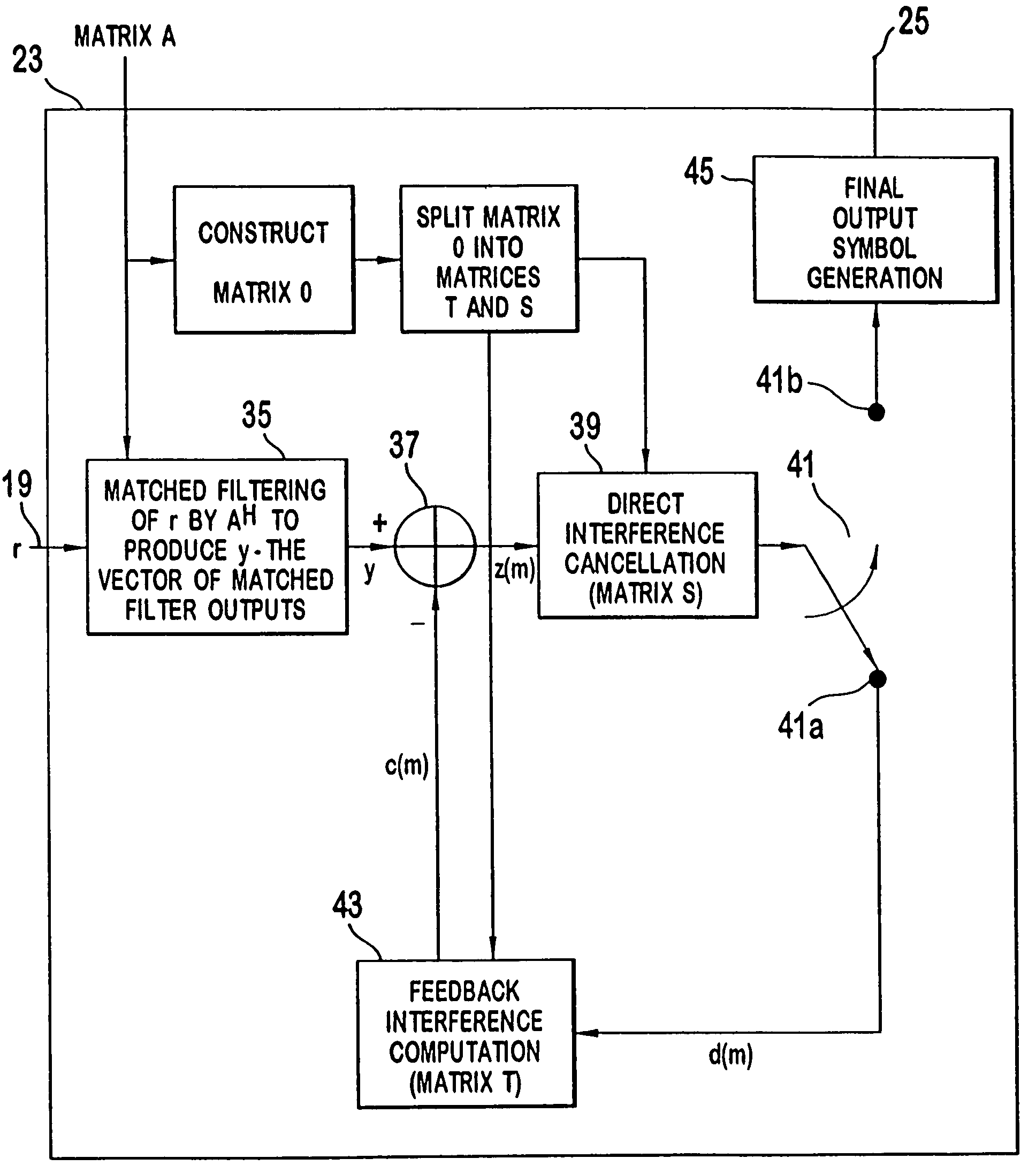Parallel interference cancellation receiver for multiuser detection CDMA signals
a receiver and interference cancellation technology, applied in the field of multi-access digital communication systems, can solve the problems of computational intensive, difficult economic implementation, complex inversion of the objective matrix o, etc., and achieve the effect of less computation and greater accuracy
- Summary
- Abstract
- Description
- Claims
- Application Information
AI Technical Summary
Benefits of technology
Problems solved by technology
Method used
Image
Examples
Embodiment Construction
[0063]The embodiments will be described with reference to the drawing figures where like numerals represent like elements throughout.
[0064]Shown in FIG. 8 is a parallel interference cancellation receiver 17 of the present invention for detecting, after reception, a plurality of users transmitting over a common CDMA channel. The receiver 17 comprises an input 19 for inputting data from all users k transmitted in a discreet block of time in the form of an input vector r containing the combined data from each user's subchannel, a channel estimation processor 21 for deriving individual impulse response estimates h(k) for each user and assembling a total system response matrix A, a data estimation and interference canceller 23 for generating interference free user data d(k) and an output 25 for outputting user data d(k) for each user k from the received channel data r in the form of an output vector. The parallel interference canceller 17 comprises a plurality of processors having collat...
PUM
 Login to View More
Login to View More Abstract
Description
Claims
Application Information
 Login to View More
Login to View More - R&D
- Intellectual Property
- Life Sciences
- Materials
- Tech Scout
- Unparalleled Data Quality
- Higher Quality Content
- 60% Fewer Hallucinations
Browse by: Latest US Patents, China's latest patents, Technical Efficacy Thesaurus, Application Domain, Technology Topic, Popular Technical Reports.
© 2025 PatSnap. All rights reserved.Legal|Privacy policy|Modern Slavery Act Transparency Statement|Sitemap|About US| Contact US: help@patsnap.com



